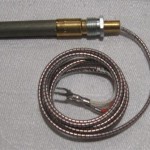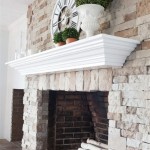Unvented Propane Fireplaces: A Comprehensive Overview
Unvented propane fireplaces, also known as vent-free propane fireplaces, represent a segment of the heating appliance market offering localized warmth and aesthetic appeal. Unlike their vented counterparts, these fireplaces do not require a chimney or flue to expel combustion byproducts. This characteristic allows for greater installation flexibility and can translate to cost savings during installation. However, this design also necessitates a thorough understanding of their operation, safety considerations, and regulatory compliance.
The operational principle of unvented propane fireplaces relies on highly efficient combustion. The units are designed to burn propane gas almost completely, minimizing the production of potentially harmful byproducts like carbon monoxide, nitrogen dioxide, and unburned hydrocarbons. The efficiency rating of these fireplaces is typically very high, often exceeding 99%, which means a large portion of the energy from the propane is converted into heat within the room.
Despite their efficiency, the inherent nature of unvented combustion means that some level of byproducts will inevitably be released into the living space. This is why stringent safety standards and regulations govern the manufacture, installation, and use of these appliances. Understanding these regulations and adhering to them is paramount for safe and effective operation.
Key Point 1: Operation and Efficiency
Unvented propane fireplaces operate on a relatively simple principle. Propane gas is supplied to a burner system, where it mixes with air and is ignited. The resulting flame heats a ceramic or metal component, which then radiates heat into the room. The efficiency of this process is largely determined by the burner design and the precision with which air and propane are mixed. Modern units often incorporate oxygen depletion sensors (ODS) as a crucial safety feature. The ODS monitors the oxygen levels in the room and automatically shuts off the gas supply if the oxygen concentration drops below a pre-determined threshold, indicating a potential buildup of combustion byproducts.
The high efficiency ratings of unvented propane fireplaces are a significant selling point. Because the majority of the heat produced is released directly into the room, less energy is wasted compared to vented fireplaces, where a substantial portion of the heat escapes through the chimney. This can result in lower heating costs, especially in homes where supplemental heating is desired in specific areas. However, it is important to remember that this efficiency comes with the caveat of releasing all combustion byproducts into the living space.
Moreover, the heat output of unvented propane fireplaces is measured in British Thermal Units (BTUs). Selecting a unit with the appropriate BTU rating for the size of the room is crucial for both comfort and safety. An oversized unit can lead to overheating and potentially contribute to a buildup of humidity in the room, while an undersized unit may not provide sufficient heating. Manufacturers typically provide guidelines on BTU ratings based on room size and insulation levels.
Key Point 2: Safety Considerations and Regulations
Safety is the paramount concern when considering unvented propane fireplaces. While modern units are equipped with safety features, it is imperative to understand the potential risks and take necessary precautions. The primary risk associated with these fireplaces is the potential buildup of combustion byproducts, particularly carbon monoxide (CO). CO is a colorless, odorless, and poisonous gas that can be fatal at high concentrations. Regular maintenance, proper ventilation, and the installation of carbon monoxide detectors are essential for mitigating this risk.
Building codes and regulations regarding unvented propane fireplaces vary significantly depending on location. Many jurisdictions have restrictions on their use, including limitations on the size of the unit relative to the room size, mandatory carbon monoxide detector requirements, and restrictions on their use in bedrooms or bathrooms. Before installing an unvented propane fireplace, it is crucial to consult with local building officials and ensure compliance with all applicable codes and regulations. Failure to do so can result in fines, the requirement to remove the fireplace, and, more importantly, increased safety risks.
Furthermore, proper installation is critical for safe operation. It is generally recommended that installation be performed by a qualified technician who is familiar with propane gas systems and local building codes. Improper installation can lead to gas leaks, inefficient combustion, and increased risk of carbon monoxide poisoning. Regular maintenance, including cleaning the burner and inspecting the ODS sensor, is also essential for ensuring the fireplace operates safely and efficiently. It is also crucial to ensure proper ventilation in the room where the fireplace is installed. While these fireplaces are designed to operate in a closed environment, fresh air exchange is necessary to prevent the buildup of moisture and combustion byproducts.
Key Point 3: Installation and Maintenance
The installation process for an unvented propane fireplace is generally less complex and less expensive than that of a vented fireplace, primarily because it does not require a chimney or flue. However, proper installation is still crucial for ensuring safety and optimal performance. The first step is to select a suitable location for the fireplace. The location should be away from flammable materials, such as curtains or furniture, and should allow for adequate clearance around the unit. The fireplace should also be installed on a level surface to ensure proper operation of the burner system.
Once the location has been selected, the propane gas line needs to be connected to the fireplace. This should be done by a qualified technician who is experienced in working with propane gas systems. The technician will ensure that the gas line is properly sized and installed according to local codes. They will also perform a leak test to ensure that there are no gas leaks in the system.
After the gas line has been connected, the fireplace can be secured to the floor or wall. Some models are designed to be freestanding, while others are designed to be mounted on the wall. It is important to follow the manufacturer's instructions carefully when installing the fireplace to ensure that it is properly secured. Once the fireplace has been installed, it should be tested to ensure that it is operating correctly. The technician will verify that the burner is igniting properly, that the flame is stable, and that the ODS sensor is functioning correctly.
Regular maintenance is essential for ensuring the safety and efficiency of an unvented propane fireplace. The frequency of maintenance will depend on the amount of use the fireplace receives. However, at a minimum, the fireplace should be inspected and cleaned annually. The burner should be cleaned with a soft brush to remove any dust or debris. The ODS sensor should also be inspected to ensure that it is functioning properly. It is also important to check the gas line for leaks regularly. This can be done by applying a soapy water solution to the gas line connections and looking for bubbles. If any gas leaks are detected, the gas supply should be shut off immediately, and a qualified technician should be called to repair the leak.
Furthermore, maintaining proper indoor air quality is crucial when using an unvented propane fireplace. This can be achieved by ensuring adequate ventilation in the room where the fireplace is installed. Opening a window or using a ventilation fan can help to remove any combustion byproducts that may accumulate. It is also important to avoid using the fireplace for extended periods of time, especially in poorly ventilated rooms. Carbon monoxide detectors should be installed in the room where the fireplace is located and on every level of the home. These detectors should be tested regularly to ensure that they are functioning properly.
In addition to regular maintenance, it is important to follow the manufacturer's instructions carefully when operating an unvented propane fireplace. This includes using the correct type of propane gas, operating the fireplace within the recommended BTU range, and avoiding the use of flammable materials near the fireplace. By following these guidelines, homeowners can enjoy the warmth and ambiance of an unvented propane fireplace while minimizing the risks associated with its use.
While unvented propane fireplaces offer several advantages, including ease of installation and high efficiency, it is important to be aware of the potential risks and to take necessary precautions. By understanding the operational principles, safety considerations, and installation requirements, homeowners can make informed decisions about whether an unvented propane fireplace is the right choice for their needs.
:max_bytes(150000):strip_icc()/ventless-gas-fireplaces-4160746-hero-f9d4bdcd9bd446eb84406de306f790ba.jpg?strip=all)
How To Pick Out A Ventless Gas Fireplace

Radiance Vent Free Gas Stove The Place

50 Free Standing Ventless Gas Fireplace Visualhunt

Ventless Gas Fireplace Propane

Vent Free Inserts White Mountain Hearth

The Debate Continues Are Ventless Fireplaces Safe

Vent Free Archives SÓlas Contemporary Fireplaces

50 Free Standing Ventless Gas Fireplace Visualhunt

Pleasant Hearth 27 500 Btu 42 In Convertible Ventless Propane Gas Fireplace Cherry Vff Ph26lp The Home Depot

What Is A Ventless Gas Fireplace Dorr Oil
Related Posts








